Wild FoodDespite a cold climate and a short growing season, Estonia has abundant agricultural resources, with over half the country classified as forest and about one-third serving as farmland. Wild berries, mushrooms, and game are plentiful, and hunting, fishing, and foraging are common recreational activities. ▶ |
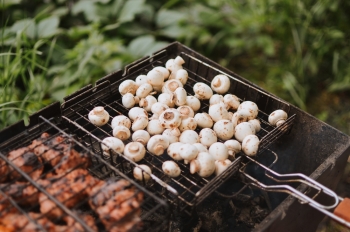 |
Four BasicsEstonia belongs to the area known as the “beer, vodka, rye bread, and pork” belt of Europe, along with other Scandinavian, German, and Russian countries where those foods serve as basic dietary staples for a majority of the population. ▶ |
 |
Marzipan MedicineEstonian marzipan is famous, with the city of Tallinn being one of the oldest documented places of marzipan production. Estonian marzipan, known as martsipan in Estonia, is a sweet made from almonds, powdered sugar, and egg whites that dates back to medieval times. It can be flavored with spices or extracts and is often used to decorate cakes and pastries in a paste that can be rolled, hand-shaped, or pressed into molds.
Marzipan was first used as a medicine, as it was thought to have healing properties, and was sold in pharmacies after its 1422 invention. ▶ |
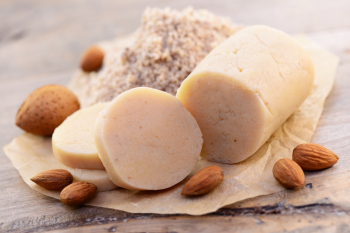 |
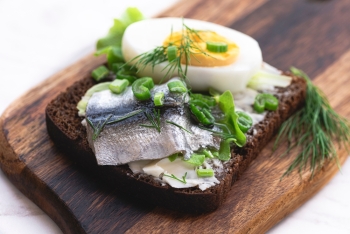 |
Kiluvõileib Culture◀ Similar to Scandinavian smørrebrød, Estonia's open-faced sandwiches are popular and often include fish, meats, or cheese. A traditional combo called kiluvõileib is rye bread that is topped with a marinated sprat fillet. These sprat sandwiches are taken seriously by Estonians, who serve them at all kinds of special occasions. |
Berry DeliciousEstonia has many edible berries that are native to the country, including wild strawberries, cloudberries, cranberries, bilberries, cowberries, lingonberries, and wild raspberries. Foraging for berries is a common recreational activity in Estonia, and the cuisine makes extensive use of forest berries. ▶ |
 |
VerivorstA traditional Christmas food in Estonia is blood sausage, known as verivorst. It is made of pig's blood, barley groats, pork, marjoram, and other flavorings. It is sold and eaten mostly in the winter. ▶ |
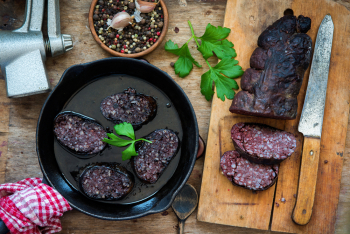 |
Strong MustardMustard has been a part of Estonian cuisine longer than ketchup even exists. Estonian mustard is very strong and spicy, and is also respected as a medicine to alleviate a cold and sore throat. ▶ |
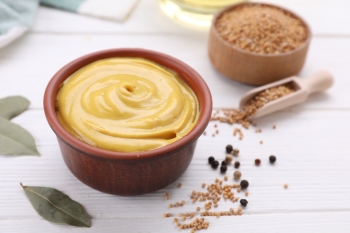 |
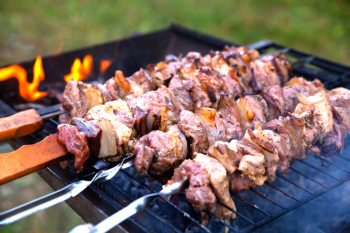 |
Midsummer Grilling◀ During Jaanipäev (Midsummer Day), Estonians celebrate with barbecues, grilling meats, and traditional dishes. Shashliks are meat on a stick, made from pork, beef, chicken, turkey, and lamb. They are popularly grilled up on Midsummer's night. |
Sea BuckthornSea buckthorn is a native berry that is widely used in Estonian cuisine. It has a high vitamin content and unique flavor, often found in pies, jams, and alcoholic beverages. The berry's juice remains the most popular food product. ▶ |
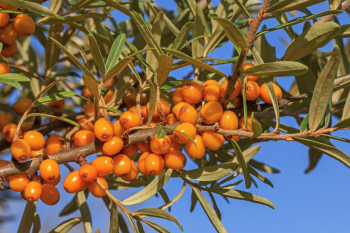 |
Cherished BreadBread is a large and traditional part of Estonian culture, considered sacred and an essential part of anything representing a meal. A gift of bread and salt is common for a housewarming present, and one traditional custom is still followed by many Estonians—in case a piece of bread is accidentally dropped, it should be picked up and given a kiss in order to show respect for the bread. ▶ |
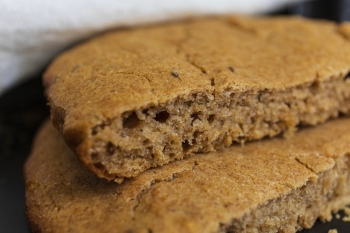 |
Semolina FoamSemolina mousse (mannavaht) is a very popular Estonian dessert made with semolina and berries. It is also called semolina foam and is commonly served with cold milk on top. ▶ |
 |
 |
Estonians for Aspic◀ Estonians enjoy eating aspic, a dish also known as meat jelly, which has roots in northern Europe. The traditional Estonian variety is a mix of hard-boiled eggs, various fresh herbs, and pork. It’s often made for special occasions. |
Pink Potato-Beet SaladRosolje is a traditional Estonian salad that dates back to the 19th century. It's typically made with boiled beets and potatoes along with herring and hard-boiled eggs. Additional ingredients like carrots, onions, and pickles are common. Rosolje is often served at special occasions and holidays, and is a beloved Estonian dish. |
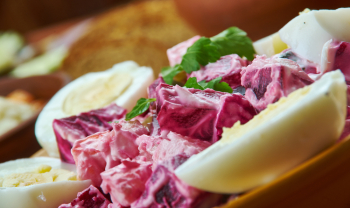 |
KamaKama is a traditional Estonian food product that is highly regarded for its unique taste and nutritional value. It is essentially a mixture of finely milled grains and legumes, including roasted barley, rye, oat, and pea flour. It can be eaten on its own, mixed into buttermilk or yogurt, and topped with berries. Kama can also be used as a substitute for cocoa in chocolate bars. ▶ |
 |
Kingle OccasionsEstonian kringle is a traditional sweetbread often served at birthdays and other special occasions. It is made from butter-and-sugar-brushed dough that's rolled and cut lengthwise, then the two pieces of dough are twisted together into a pretzel shape. ▶ |
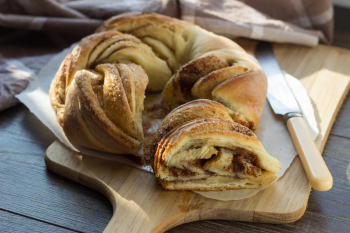 |
 Estonia
Estonia
Did You Know?
BACK TO TOP

